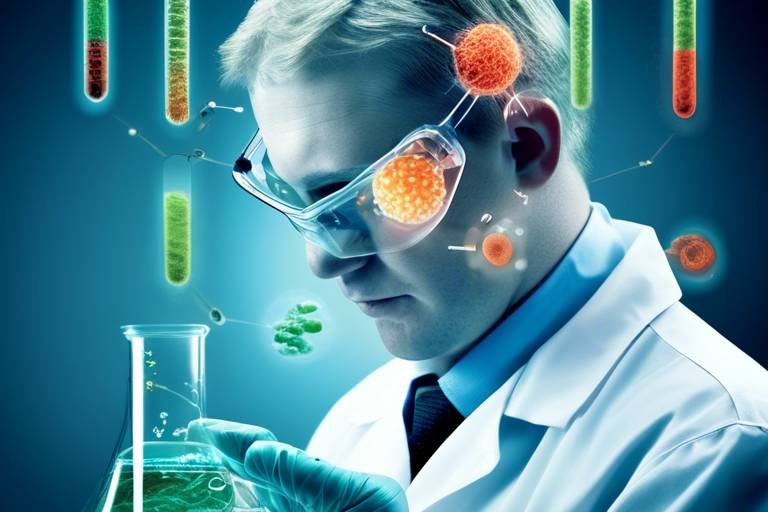Emerging Trends in Biotechnology - What Lies Ahead
Biotechnology is at the forefront of scientific innovation, continuously evolving and reshaping various industries. As we look ahead, several emerging trends are set to revolutionize how we approach challenges in healthcare, agriculture, and environmental sustainability. With advancements in precision medicine, gene editing, and the integration of artificial intelligence, the potential for positive change is immense. Each of these trends not only enhances existing practices but also opens up new avenues for research and application. In this article, we will explore these exciting developments and their implications for the future.
Imagine a world where medical treatments are customized to fit your unique genetic makeup. Precision medicine is making this a reality, allowing healthcare providers to tailor therapies to individual patients. This approach not only promises more effective treatments but also aims to minimize side effects, marking a significant shift in how we think about healthcare. By analyzing a patient's genetic profile, doctors can select the most suitable medications and dosages, leading to improved patient outcomes. The shift towards precision medicine is not just about treating illnesses but also about preventing them by understanding genetic predispositions.
The advent of CRISPR technology has transformed the landscape of gene editing. This powerful tool allows scientists to make precise modifications to DNA, paving the way for groundbreaking treatments for genetic disorders. Imagine being able to correct mutations at the molecular level—this is the promise of CRISPR. Beyond healthcare, gene editing is also making waves in agriculture, where it can enhance crop resilience and yield. However, with great power comes great responsibility, and the ethical implications of gene editing cannot be overlooked.
As we embrace the potential of gene editing, it is crucial to address the ethical considerations that arise. Questions about the moral implications of altering genetic material are at the forefront of discussions among scientists, ethicists, and policymakers. Striking a balance between innovation and ethics is essential to ensure that biotechnology serves the greater good. We must ask ourselves: how do we responsibly harness the power of gene editing while safeguarding our values?
Navigating the complex landscape of regulations surrounding gene editing poses significant challenges. Policymakers are tasked with developing guidelines that not only foster innovation but also address safety and ethical concerns. The need for a robust regulatory framework is paramount to ensure public trust and acceptance of these technologies. It’s a delicate dance between encouraging scientific progress and ensuring that we do not compromise on safety or ethics.
Public understanding and acceptance of gene editing technologies are vital for their success. Education plays a key role in shaping perceptions about the potential benefits and risks associated with these innovations. As biotechnology advances, it is essential to engage communities in discussions about these technologies. By demystifying gene editing and promoting informed conversations, we can pave the way for a future where biotechnology is embraced rather than feared.
Biotechnology is not just confined to healthcare; it is also transforming the agricultural landscape. Through the development of genetically modified organisms (GMOs) and sustainable practices, biotechnology aims to enhance crop yields and resilience against climate change. With the global population on the rise, the pressure to produce more food with fewer resources has never been greater. Here, biotechnology steps in as a game-changer, providing solutions that can meet these pressing challenges head-on.
Another exciting trend in biotechnology is biomanufacturing, which utilizes biological systems to produce materials and chemicals. This innovative approach not only promotes sustainability by reducing reliance on fossil fuels but also minimizes environmental impact. By harnessing the power of microorganisms, we can create essential products in a more eco-friendly manner. The shift towards biomanufacturing is not just a trend; it's a necessary evolution towards a more sustainable future.
Microbial production is a fascinating aspect of biomanufacturing that leverages microorganisms for manufacturing processes. From biofuels to pharmaceuticals, this method offers a sustainable alternative for producing essential products. Imagine a world where our energy sources and medicines are derived from microorganisms rather than depleting natural resources. This vision is becoming a reality, and it holds great promise for a more sustainable future.
Cellular agriculture takes sustainability a step further by focusing on producing food from cell cultures. This innovative approach aims to create sustainable meat alternatives, significantly reducing the environmental footprint of traditional livestock farming. As concerns about climate change and animal welfare grow, cellular agriculture emerges as a viable solution to meet the global demand for food without compromising the planet.
The integration of artificial intelligence (AI) into biotechnology is another trend that is reshaping the industry. AI enhances research and development processes, allowing scientists to analyze vast amounts of data quickly and accurately. Machine learning algorithms can identify patterns that humans might overlook, accelerating drug discovery and improving diagnostic tools. The synergy between AI and biotechnology holds the promise of unlocking new insights that can lead to innovative solutions.
Advanced data analysis and predictive modeling are essential tools in the biotechnological toolkit. These techniques streamline research, enabling scientists to make informed decisions in experimental design. By harnessing the power of big data, researchers can identify trends and correlations that inform their work, ultimately leading to more effective outcomes.
AI-driven drug discovery is revolutionizing the way potential drug candidates are identified. By leveraging machine learning, researchers can significantly reduce the time and costs associated with bringing new therapies to market. This approach not only accelerates the development of new treatments but also enhances the likelihood of success in clinical trials.
Sustainability is a key focus in biotechnology, with innovations aimed at reducing waste and conserving resources. The future of biotechnology is not just about advancements; it's also about ensuring that these advancements contribute to a greener planet. As industries evolve, sustainable practices will play a crucial role in shaping the future landscape of biotechnology.
Innovations in waste reduction technologies are minimizing environmental impact through efficient resource use. These advancements promote circular economy principles, benefiting both businesses and ecosystems. By rethinking how we use and dispose of resources, biotechnology can lead the way towards a more sustainable future.
The development of biodegradable materials is addressing pressing pollution concerns. Biotechnology is at the forefront of creating sustainable alternatives to traditional plastics, promoting environmental health. Imagine a world where the materials we use do not linger in landfills for centuries—this is the goal of biodegradable innovations in biotechnology.
The biotechnology sector requires a skilled workforce equipped with diverse knowledge. As the industry evolves, educational programs must adapt to prepare future professionals for emerging challenges and opportunities. Interdisciplinary approaches in biotechnology education foster collaboration among various fields, enhancing problem-solving skills and preparing students for complex real-world issues.
Interdisciplinary approaches in biotechnology education encourage collaboration among various fields. By integrating knowledge from different disciplines, students are better equipped to tackle the multifaceted challenges of the biotechnology landscape. This integration not only enhances learning but also prepares students for the complexities of real-world applications.
In the rapidly evolving biotechnology landscape, continuous learning and adaptation are essential. Professionals must stay updated on advancements to remain competitive and effective in their roles. Embracing a mindset of lifelong learning will be crucial for those looking to thrive in this dynamic field.
- What is biotechnology? Biotechnology is a field that combines biology and technology to develop products and processes that improve lives and the health of our planet.
- How does precision medicine work? Precision medicine tailors treatments based on individual genetic profiles, allowing for more effective therapies with fewer side effects.
- What are the ethical concerns surrounding gene editing? Ethical concerns include the moral implications of altering genetic material and the potential for unintended consequences.
- What is cellular agriculture? Cellular agriculture focuses on producing food from cell cultures, offering sustainable alternatives to traditional livestock farming.
- How is AI used in biotechnology? AI is used to enhance research and development processes, analyze data, and accelerate drug discovery.
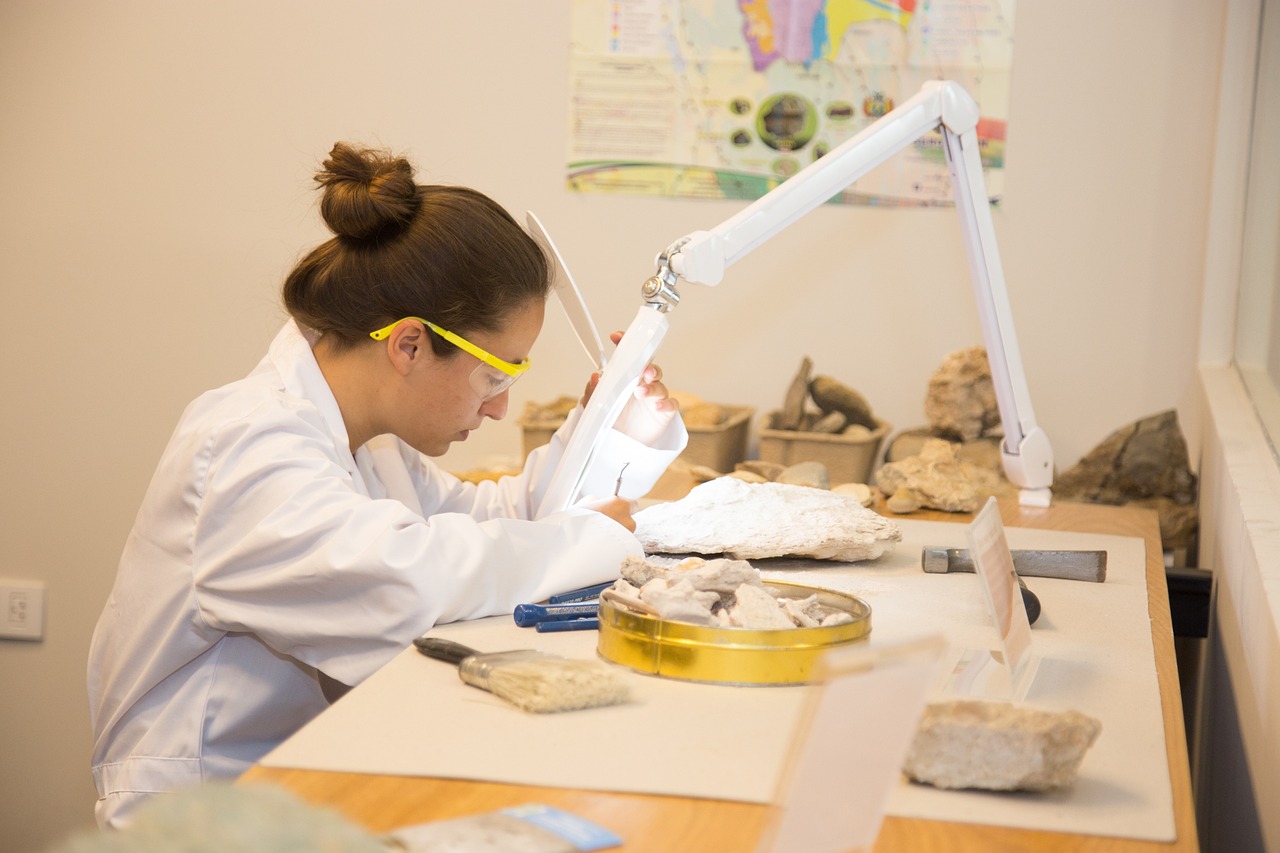
Precision Medicine
is the future of healthcare, and it’s here to revolutionize how we approach treatment. Imagine a world where your doctor prescribes medications tailored specifically to your genetic makeup. Sounds like science fiction, right? Well, it's becoming a reality! This innovative approach is all about customizing healthcare, ensuring that therapies are not just effective but also minimize side effects. By analyzing an individual’s genetic profile, healthcare providers can pinpoint the best treatment options. This means that rather than a one-size-fits-all solution, patients receive personalized care that is as unique as their DNA.
The shift towards precision medicine is significant, as it enhances patient outcomes in ways we never thought possible. For instance, cancer treatments have evolved dramatically, moving away from traditional therapies that often harm healthy cells. With precision medicine, oncologists can identify the specific mutations in a patient's tumor and choose targeted therapies that attack cancer cells while sparing healthy ones. This leads to better recovery rates and improved quality of life.
But how does this all work? The process typically involves several key steps:
- Genetic Testing: Patients undergo tests to identify genetic variations that may affect their response to certain medications.
- Data Analysis: The results are analyzed to determine the most effective treatment options based on the individual’s genetic profile.
- Personalized Treatment Plans: Doctors create tailored treatment plans that consider the patient’s unique genetic makeup.
While the benefits are clear, the implementation of precision medicine doesn't come without challenges. One major hurdle is the accessibility of genetic testing. Not everyone has the means to undergo such tests, which can lead to disparities in healthcare. Furthermore, there's the issue of data privacy. As we gather more genetic information, ensuring that this data is protected becomes paramount. Patients must feel confident that their genetic information will not be misused or disclosed without consent.
Moreover, the healthcare industry must adapt to these changes. Medical professionals need training to understand and interpret genetic data effectively. This means that educational programs must evolve to integrate genetics into the curriculum, preparing future healthcare providers for this new landscape.
In conclusion, precision medicine is not just a trend; it’s a transformative approach that promises to enhance healthcare significantly. As we continue to explore the genetic underpinnings of diseases, we move closer to a future where treatments are tailored to the individual, leading to better outcomes and a healthier society.
- What is precision medicine? Precision medicine is an innovative approach to treatment that tailors healthcare to individual genetic profiles.
- How does precision medicine improve patient outcomes? By customizing treatments based on genetic information, precision medicine can enhance effectiveness and reduce side effects.
- What challenges does precision medicine face? Challenges include accessibility to genetic testing, data privacy concerns, and the need for healthcare professionals to adapt to new technologies.
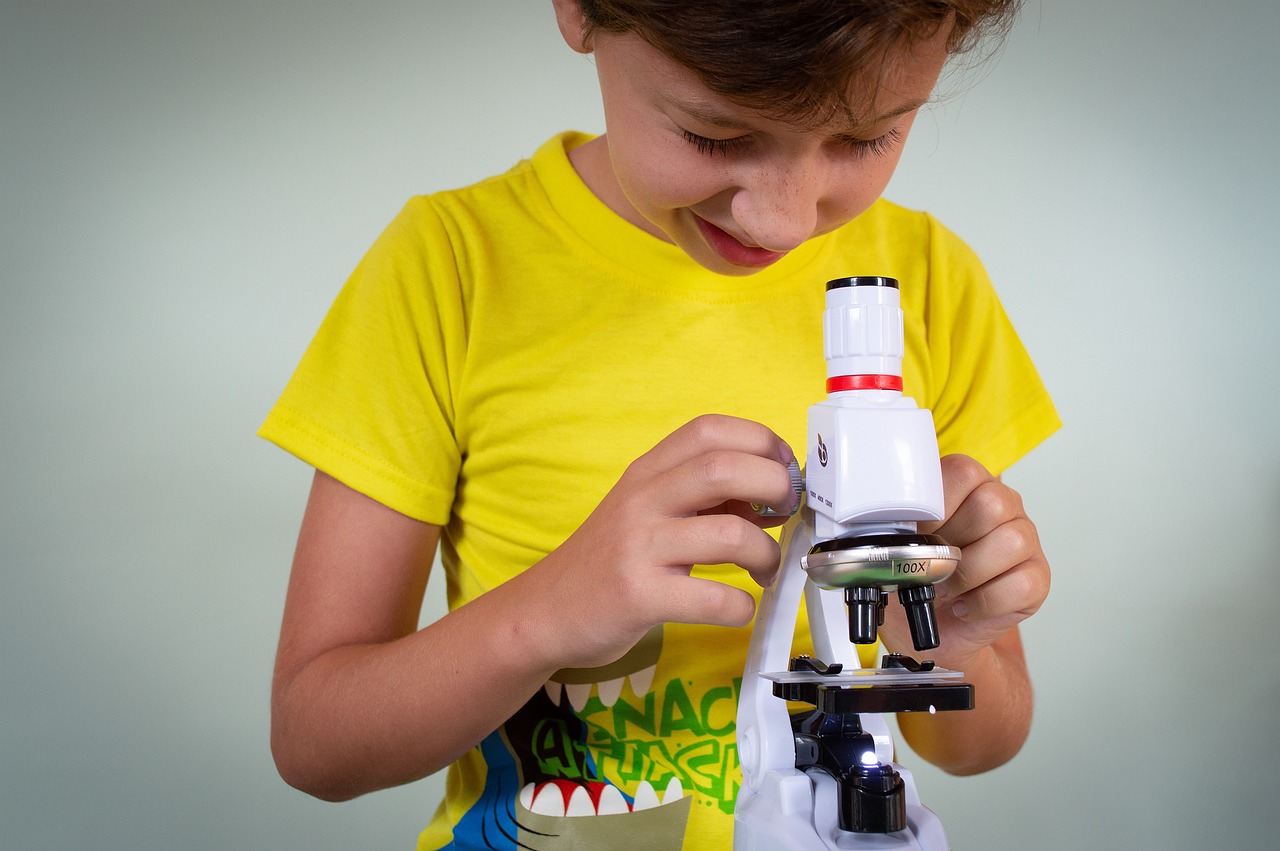
CRISPR and Gene Editing
CRISPR technology has taken the world by storm, and for good reason. This groundbreaking method of gene editing allows scientists to make precise modifications to DNA with unprecedented ease and accuracy. Imagine being able to edit the genetic code of living organisms as simply as you would edit a document on your computer. That’s the power of CRISPR! It stands for Clustered Regularly Interspaced Short Palindromic Repeats, a mouthful that reflects its complex nature, but at its core, it’s all about making targeted changes to genes. This technology is not just a scientific curiosity; it holds the potential to revolutionize fields such as healthcare, agriculture, and environmental conservation.
One of the most exciting applications of CRISPR is in the realm of genetic disorders. By using this technology, researchers can potentially correct mutations that cause diseases like sickle cell anemia and cystic fibrosis. The ability to edit genes means we could move towards personalized medicine, where treatments are tailored to the individual’s genetic makeup. This shift could lead to more effective therapies with fewer side effects, fundamentally changing how we approach healthcare.
However, with great power comes great responsibility. The rise of gene editing technologies like CRISPR has sparked a heated debate over ethical considerations. Questions arise about the implications of altering human DNA, especially when it comes to germline editing, which affects future generations. Are we playing God? What happens if these edits lead to unintended consequences? It’s crucial for scientists, ethicists, and policymakers to engage in open dialogue to navigate these complex issues responsibly.
As the capabilities of CRISPR expand, so too do the regulatory challenges associated with its use. Policymakers are faced with the daunting task of creating guidelines that not only foster innovation but also ensure safety and ethical compliance. The rapid pace of advancements in biotechnology often outstrips existing regulations, leaving a gap that could be dangerous if not addressed. For instance, countries around the world are grappling with how to regulate gene editing in humans versus crops, each presenting its own set of challenges.
Public understanding and acceptance of gene editing technologies are vital for their future. Many people are still unaware of how CRISPR works or its potential benefits. To bridge this knowledge gap, educational initiatives must be implemented to inform communities about the science behind gene editing. This can help demystify the technology and alleviate fears surrounding its use. When the public is well-informed, they can engage in discussions about the implications of CRISPR and contribute to shaping its future in society.
In summary, CRISPR and gene editing represent a monumental leap forward in biotechnology. They offer the promise of curing genetic diseases, enhancing agricultural practices, and addressing some of the most pressing challenges we face today. However, it is imperative that we approach this technology with caution, balancing innovation with ethical considerations and public understanding. The future of biotechnology is bright, but it requires a collaborative effort to navigate the complexities that lie ahead.
- What is CRISPR? CRISPR is a revolutionary gene-editing technology that allows for precise modifications to DNA.
- How can CRISPR be used in healthcare? CRISPR has the potential to treat genetic disorders by correcting mutations at the DNA level.
- What are the ethical concerns surrounding CRISPR? Ethical concerns include the potential for unintended consequences, germline editing, and the implications of "playing God."
- How is CRISPR regulated? Regulatory frameworks are still being developed to address the rapid advancements and ensure safety and ethical use.
- Why is public perception important? Public understanding and acceptance are crucial for the responsible development and use of CRISPR technologies.
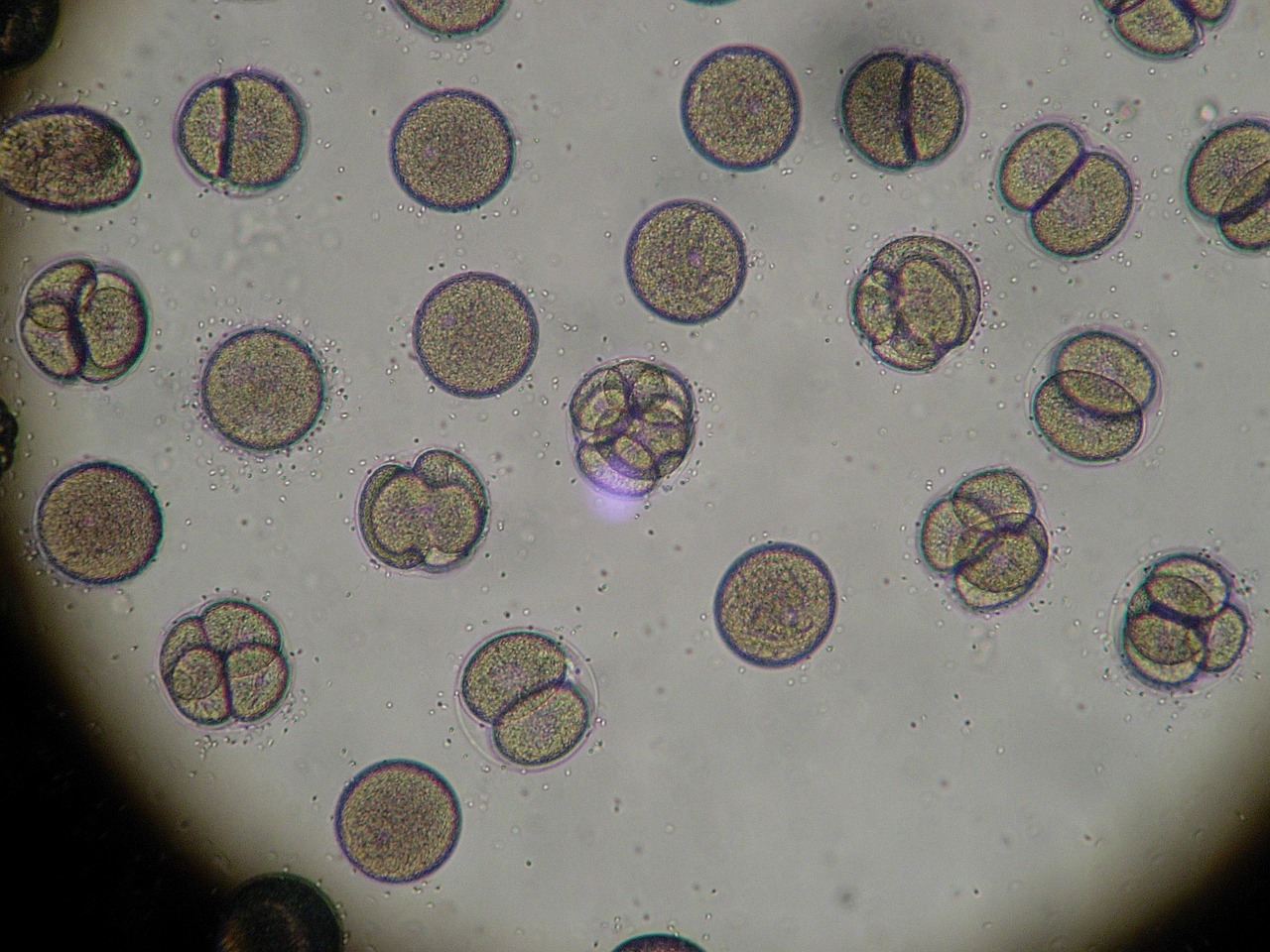
Ethical Considerations
The rapid advancement of biotechnology, particularly in areas like gene editing, raises a plethora of that society must address. As we stand on the brink of groundbreaking innovations, it's crucial to ask ourselves: how do we balance the potential benefits with the moral implications of these technologies? The introduction of tools like CRISPR has opened doors to possibilities once thought to be science fiction, enabling us to modify the very fabric of life. However, with great power comes great responsibility.
One of the most pressing ethical questions revolves around the concept of designer babies. While the ability to edit genes could eliminate hereditary diseases, it also poses the risk of creating inequalities. Imagine a world where only the wealthy can afford genetic enhancements for their children. Would we create a society where access to health and intelligence becomes a privilege rather than a right? These are the types of questions that demand our attention as we navigate this uncharted territory.
Moreover, the potential for unintended consequences cannot be overlooked. Gene editing might lead to unforeseen health issues or ecological imbalances. For instance, if we modify crops to resist pests, what happens to the insects that depend on those plants? The ripple effects of such decisions can be profound, underscoring the need for a cautious and well-regulated approach to biotechnology.
To ensure responsible use of biotechnology, we must engage in open dialogues that involve scientists, ethicists, policymakers, and the public. Transparency is key. By fostering an environment where ethical concerns are openly discussed, we can develop frameworks that guide the use of these technologies. This could include:
- Establishing clear ethical guidelines for research and application.
- Incorporating public opinion into policy-making processes.
- Promoting education on the implications of biotechnological advancements.
Ultimately, the future of biotechnology hinges on our ability to address these ethical considerations thoughtfully. We must ensure that as we innovate, we do so with a commitment to the greater good, safeguarding not only human health but also the integrity of our ecosystems.
Q1: What are the main ethical concerns surrounding CRISPR technology?
A1: The main ethical concerns include the potential for creating designer babies, the risk of unintended consequences, and the implications of genetic modifications on biodiversity.
Q2: How can society ensure responsible use of biotechnology?
A2: Society can ensure responsible use by fostering open dialogues among stakeholders, establishing ethical guidelines, and promoting public education about biotechnology's implications.
Q3: What role do policymakers play in biotechnology ethics?
A3: Policymakers are crucial in developing regulations that balance innovation with ethical considerations, ensuring that biotechnological advancements benefit society as a whole.
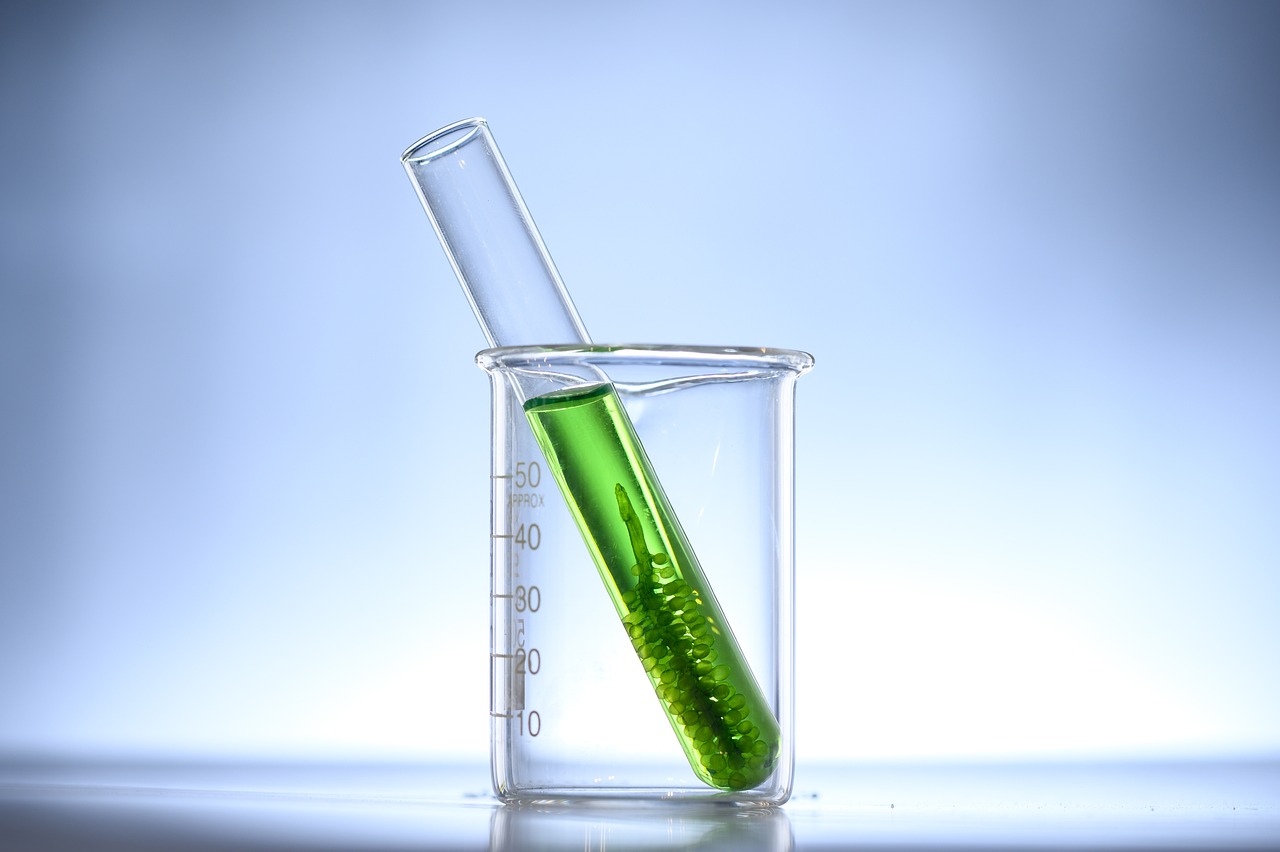
Regulatory Challenges
The rapid advancement of biotechnology, particularly in gene editing technologies like CRISPR, presents a myriad of that must be addressed to ensure safe and ethical application. As these technologies evolve, so too must the frameworks that govern them. Policymakers are faced with the daunting task of creating regulations that not only encourage innovation but also protect public health and the environment.
One of the primary challenges is the lack of standardized regulations across different countries. Each nation has its own approach to biotechnology governance, leading to a patchwork of laws that can hinder international collaboration. For instance, while some countries may embrace gene editing for agricultural purposes, others may impose strict bans, creating confusion and potential trade barriers. This inconsistency can stifle progress and limit the potential benefits of biotechnological innovations.
Additionally, the rapid pace of technological advancement often outstrips the ability of regulatory bodies to keep up. By the time regulations are drafted and implemented, the technology may have already evolved, rendering the regulations outdated. This creates a precarious situation where new discoveries could either be stifled by bureaucratic red tape or, conversely, released into the market without adequate oversight, posing risks to public safety.
Furthermore, there is a pressing need for public engagement in the regulatory process. Many people are unaware of the implications of biotechnological advancements, leading to fear and misunderstanding. Engaging the public in discussions about the benefits and risks of these technologies can foster a more informed society. Policymakers must prioritize transparency and education, ensuring that communities understand the science behind gene editing and other biotechnological innovations.
To tackle these challenges, a multifaceted approach is essential. This could include:
- International Collaboration: Countries should work together to develop harmonized regulations that facilitate research and trade.
- Adaptive Regulatory Frameworks: Regulations must be flexible enough to adapt to rapid technological changes while maintaining safety standards.
- Public Education Initiatives: Governments and organizations should invest in educational programs that demystify biotechnology for the general public.
In conclusion, navigating the regulatory landscape of biotechnology is complex and requires a careful balance between fostering innovation and ensuring safety. As we move forward, it is crucial to address these challenges proactively to harness the full potential of biotechnology for the benefit of society.
- What are the main regulatory challenges in biotechnology? The main challenges include inconsistent regulations across countries, the rapid pace of technological advancement, and the need for public engagement.
- Why is public engagement important in biotechnology regulation? Public engagement helps to demystify biotechnology, fostering understanding and acceptance while informing regulatory decisions.
- How can international collaboration improve biotechnology regulations? By harmonizing regulations, countries can facilitate research and trade, making it easier to share innovations and advancements.
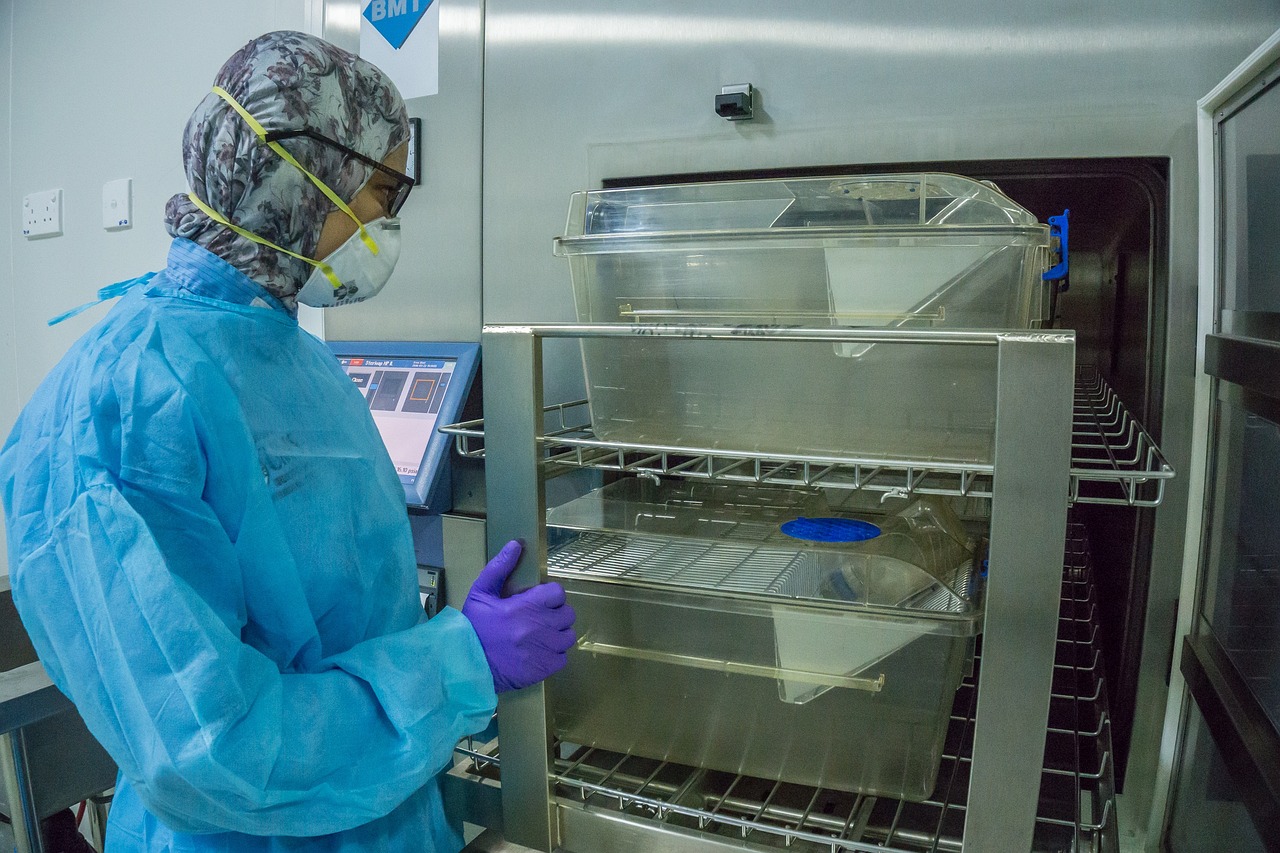
Public Perception
The landscape of biotechnology is rapidly evolving, and with it, the of the technologies that are reshaping our world. As innovations like gene editing and precision medicine emerge, they bring with them a mix of excitement and apprehension. People are naturally curious, but they also harbor concerns about the implications of these advancements. It's crucial to understand that public perception can significantly influence the trajectory of biotechnological innovations. If the public embraces these technologies, we may witness a surge in funding and research; however, if skepticism prevails, progress could stall.
One of the main factors affecting public perception is education. Many individuals lack a basic understanding of biotechnology and its potential benefits. This gap in knowledge often leads to fear and misinformation. For instance, when discussing gene editing technologies like CRISPR, it’s essential to clarify how they work and their potential to treat genetic disorders. By providing clear, accessible information, we can demystify these technologies and foster a more informed public dialogue.
Moreover, the role of media cannot be overstated. News outlets often sensationalize breakthroughs or ethical dilemmas, which can skew public opinion. A single negative headline can overshadow the countless positive impacts biotechnology has had on healthcare, agriculture, and environmental sustainability. Therefore, it’s vital for scientists and advocates to engage with the media to ensure accurate representation of biotechnological advancements.
Additionally, community engagement plays a pivotal role in shaping public attitudes. When communities are involved in discussions about biotechnological applications, they are more likely to feel a sense of ownership and trust in the processes. Open forums, workshops, and educational programs can bridge the gap between scientists and the public, allowing for a two-way conversation that addresses concerns and highlights the benefits.
In summary, the public perception of biotechnology is a complex interplay of education, media influence, and community engagement. By addressing these aspects, we can pave the way for a future where biotechnology is not only accepted but celebrated as a critical component of societal advancement.
- What is biotechnology?
Biotechnology is the use of living organisms or their systems to develop or create products, often involving genetic manipulation.
- How does gene editing work?
Gene editing allows scientists to alter DNA sequences in organisms, potentially correcting genetic disorders or enhancing certain traits.
- What are GMOs?
Genetically Modified Organisms (GMOs) are organisms whose genetic material has been altered using genetic engineering techniques.
- Why is public perception important in biotechnology?
Public perception can affect funding, research direction, and the implementation of biotechnological advancements. Positive perception can lead to acceptance and innovation, while negative views can hinder progress.
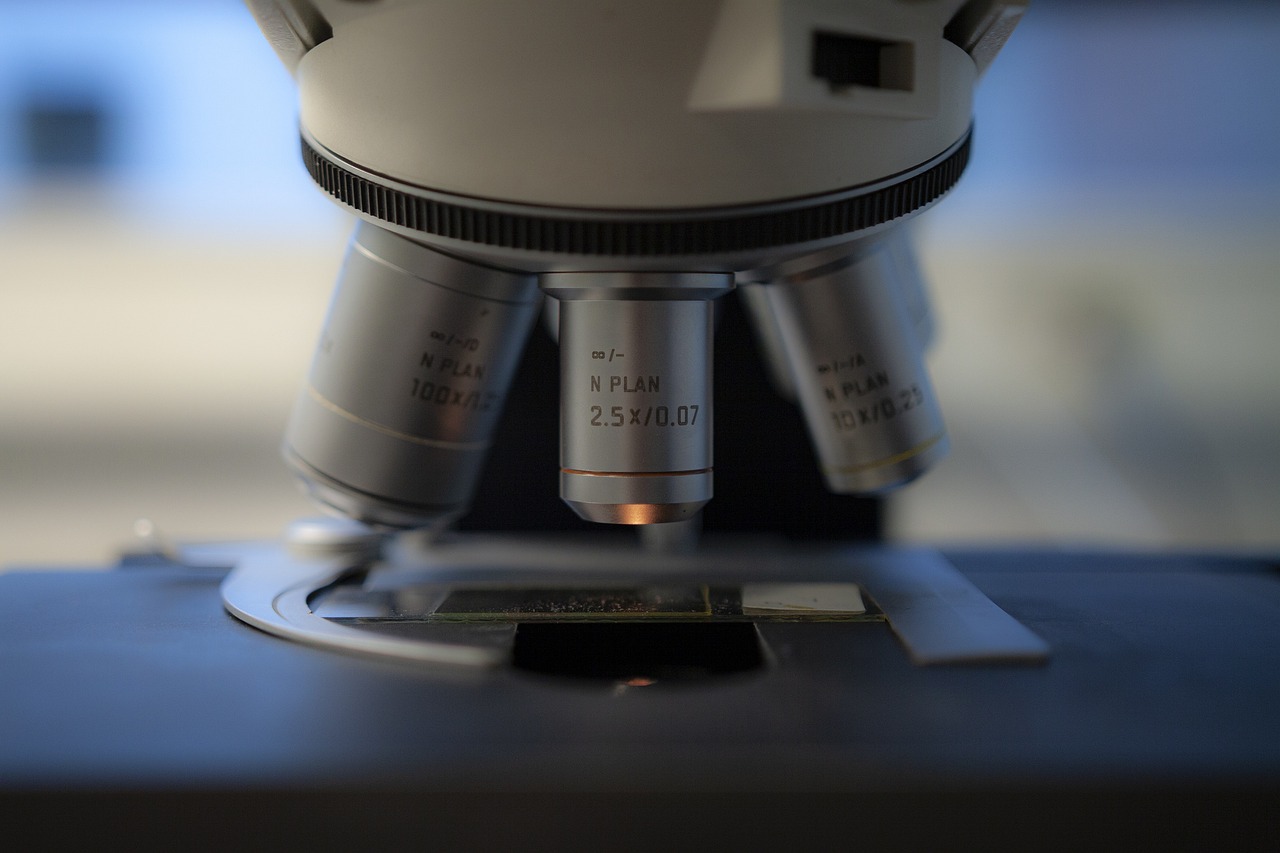
Applications in Agriculture
Biotechnology is making significant waves in the agricultural sector, fundamentally changing how we grow food and manage resources. With the world's population expected to reach nearly 10 billion by 2050, the pressure on agricultural systems is immense. Traditional farming methods alone may not suffice to meet this demand, and that's where biotechnology steps in, offering innovative solutions that can enhance productivity and sustainability.
One of the most notable applications of biotechnology in agriculture is the development of genetically modified organisms (GMOs). These organisms are engineered to possess specific traits that make them more resilient to pests, diseases, and environmental stressors. For instance, crops like Bt corn and Roundup Ready soybeans have been modified to express genes that provide resistance to insects and herbicides, respectively. This not only leads to higher yields but also reduces the need for chemical pesticides, which can have harmful effects on the environment.
Moreover, biotechnology is at the forefront of creating crops that can withstand the challenges posed by climate change. Drought-resistant varieties of staple crops, such as rice and wheat, are being developed to ensure food security in regions prone to water scarcity. These crops are designed to use water more efficiently, thus conserving this precious resource while still providing ample food production.
Additionally, biotechnology plays a crucial role in enhancing the nutritional value of crops. Biofortification is a process where crops are genetically modified to increase their nutrient content. For example, Golden Rice has been engineered to produce beta-carotene, a precursor to vitamin A, addressing malnutrition in areas where rice is a staple food. This approach not only helps combat nutrient deficiencies but also improves the overall health of populations that rely heavily on a limited diet.
To illustrate the impact of biotechnology in agriculture, consider the following table that highlights some of the key benefits:
| Biotechnology Application | Benefits |
|---|---|
| Genetically Modified Crops | Increased yield, pest resistance, reduced pesticide use |
| Drought-Resistant Varieties | Improved water efficiency, food security in arid regions |
| Biofortification | Enhanced nutritional content, reduced malnutrition |
However, the adoption of biotechnology in agriculture isn't without its challenges. There are ongoing debates about the safety of GMOs, their impact on biodiversity, and the ethical implications of modifying living organisms. Public perception plays a significant role in the acceptance of these technologies. Educating farmers and consumers about the benefits and risks associated with biotechnology is vital for fostering a more informed dialogue.
In conclusion, the applications of biotechnology in agriculture are vast and varied. From increasing crop yields to enhancing nutritional content, these innovations are essential for tackling the pressing challenges of food production in the 21st century. As we move forward, it’s crucial to balance innovation with ethical considerations, ensuring that biotechnology serves as a tool for sustainable development in agriculture.
- What are genetically modified organisms (GMOs)?
GMOs are organisms whose genetic material has been altered using genetic engineering techniques to exhibit desired traits, such as pest resistance or improved nutritional value.
- How does biotechnology help with climate change?
Biotechnology enables the development of crops that can withstand extreme weather conditions, such as drought and flooding, thereby ensuring food security in changing climates.
- Are GMOs safe for human consumption?
Extensive research and regulatory assessments are conducted to ensure the safety of GMOs. Numerous scientific organizations have concluded that GMOs are safe to eat.
- What is biofortification?
Biofortification is the process of increasing the nutritional value of crops through genetic modification, aiming to combat malnutrition in populations reliant on specific staple foods.

Biomanufacturing
Biomanufacturing is a groundbreaking approach that leverages biological systems to produce a wide array of materials and chemicals. By utilizing living organisms, such as bacteria, yeast, and algae, this innovative method not only enhances production efficiency but also promotes sustainability. Imagine a world where everyday products are made from biological processes rather than fossil fuels—this is the future that biomanufacturing promises. As we transition towards greener alternatives, biomanufacturing stands at the forefront of this revolutionary change.
The benefits of biomanufacturing are manifold. First and foremost, it significantly reduces the carbon footprint associated with traditional manufacturing processes. By using renewable resources, biomanufacturing minimizes waste and energy consumption. For instance, the production of biofuels through microbial fermentation emits far fewer greenhouse gases compared to conventional fossil fuel extraction methods. This shift is crucial as we tackle the pressing challenges of climate change and resource depletion.
Moreover, biomanufacturing is not limited to just biofuels. It encompasses a broad spectrum of applications, including:
- Pharmaceuticals: The production of drugs through biomanufacturing processes can lead to more efficient and cost-effective therapies.
- Bioplastics: Creating biodegradable plastics from renewable resources helps combat plastic pollution.
- Food Products: Microbial fermentation can be used to produce enzymes, flavors, and even alternative proteins for food.
As we delve deeper into the realms of biomanufacturing, we must also consider the technological advancements that are driving this sector forward. Techniques such as synthetic biology and metabolic engineering are revolutionizing how we approach production. By redesigning organisms at the genetic level, scientists can optimize them for specific production goals, yielding higher outputs and better-quality products.
However, with great innovation comes great responsibility. The biomanufacturing sector must navigate various challenges, including regulatory hurdles and public perception. Ensuring safety and efficacy while fostering innovation is essential to gain public trust. Transparency and education about the processes involved in biomanufacturing can help demystify this field and highlight its benefits.
In conclusion, biomanufacturing is not just a trend; it is a vital component of a sustainable future. As industries increasingly recognize the importance of eco-friendly practices, biomanufacturing will play a pivotal role in shaping our economy and environment. The integration of biological systems into manufacturing processes not only holds the promise of reducing our ecological footprint but also paves the way for innovative solutions to some of the world's most pressing challenges.
| Question | Answer |
|---|---|
| What is biomanufacturing? | Biomanufacturing refers to using biological systems to produce materials and chemicals, promoting sustainability and reducing environmental impact. |
| How does biomanufacturing benefit the environment? | It reduces the carbon footprint, minimizes waste, and utilizes renewable resources, making it a more sustainable alternative to traditional manufacturing. |
| What are some applications of biomanufacturing? | Applications include pharmaceuticals, bioplastics, and food products, among others. |
| What challenges does biomanufacturing face? | Challenges include regulatory hurdles, public perception, and ensuring safety while fostering innovation. |
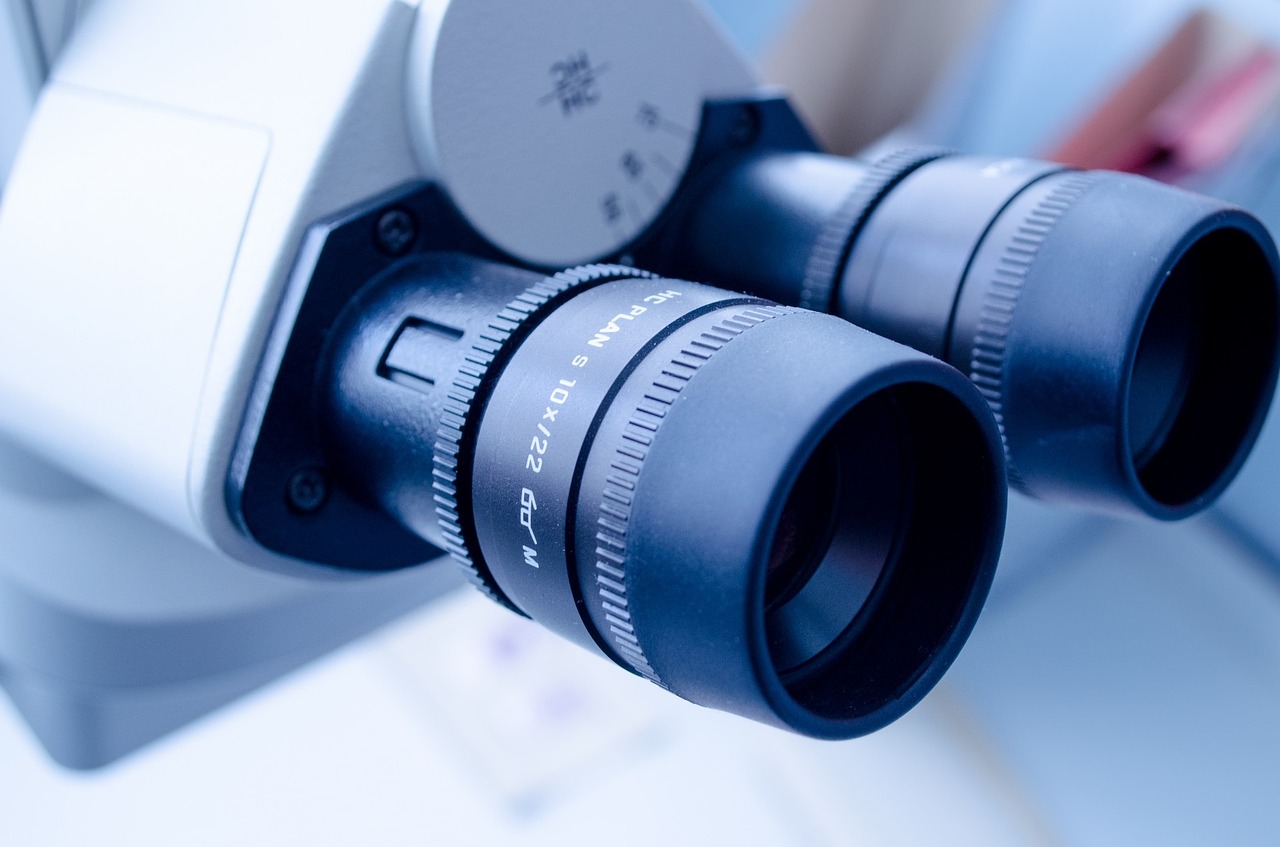
Microbial Production
Microbial production is an exciting frontier in the realm of biotechnology, where we harness the power of microorganisms to create a wide array of products. Imagine tiny factories working tirelessly, converting raw materials into essential goods like biofuels, pharmaceuticals, and even food ingredients. This approach not only maximizes efficiency but also champions sustainability, offering a greener alternative to traditional manufacturing processes. By utilizing microorganisms, we can significantly reduce our dependence on fossil fuels, which is a crucial step toward a more sustainable future.
One of the most fascinating aspects of microbial production is its versatility. Different microorganisms, such as bacteria, yeast, and fungi, can be genetically engineered or selectively bred to enhance their production capabilities. For instance, yeast can be modified to produce ethanol, a renewable energy source, while certain bacteria can be tailored to synthesize complex pharmaceuticals. This flexibility allows industries to innovate continuously, leading to the development of new products that meet the evolving needs of society.
Moreover, microbial production plays a pivotal role in addressing global challenges. As the world grapples with issues like climate change and resource depletion, the ability to produce essential materials sustainably is more important than ever. By employing microbial systems, we can:
- Reduce greenhouse gas emissions associated with traditional manufacturing.
- Utilize waste materials as feedstock, promoting a circular economy.
- Produce biodegradable alternatives to harmful plastics.
The future of microbial production is not just about efficiency; it's about revolutionizing the way we think about production and consumption. As research progresses, we can expect to see even more innovative applications emerge, making this field a cornerstone of sustainable development. With the right investments and support, microbial production can lead us towards a more sustainable and resilient future.
Q1: What is microbial production?
A1: Microbial production refers to the use of microorganisms to produce various products, including biofuels, pharmaceuticals, and food ingredients, in a sustainable manner.
Q2: How does microbial production contribute to sustainability?
A2: It reduces reliance on fossil fuels, minimizes waste, and can utilize waste materials as feedstock, promoting a circular economy.
Q3: What types of microorganisms are commonly used in microbial production?
A3: Common microorganisms include bacteria, yeast, and fungi, which can be genetically engineered for enhanced production capabilities.
Q4: What are some applications of microbial production?
A4: Applications include the production of renewable energy sources like ethanol, biodegradable materials, and various pharmaceuticals.
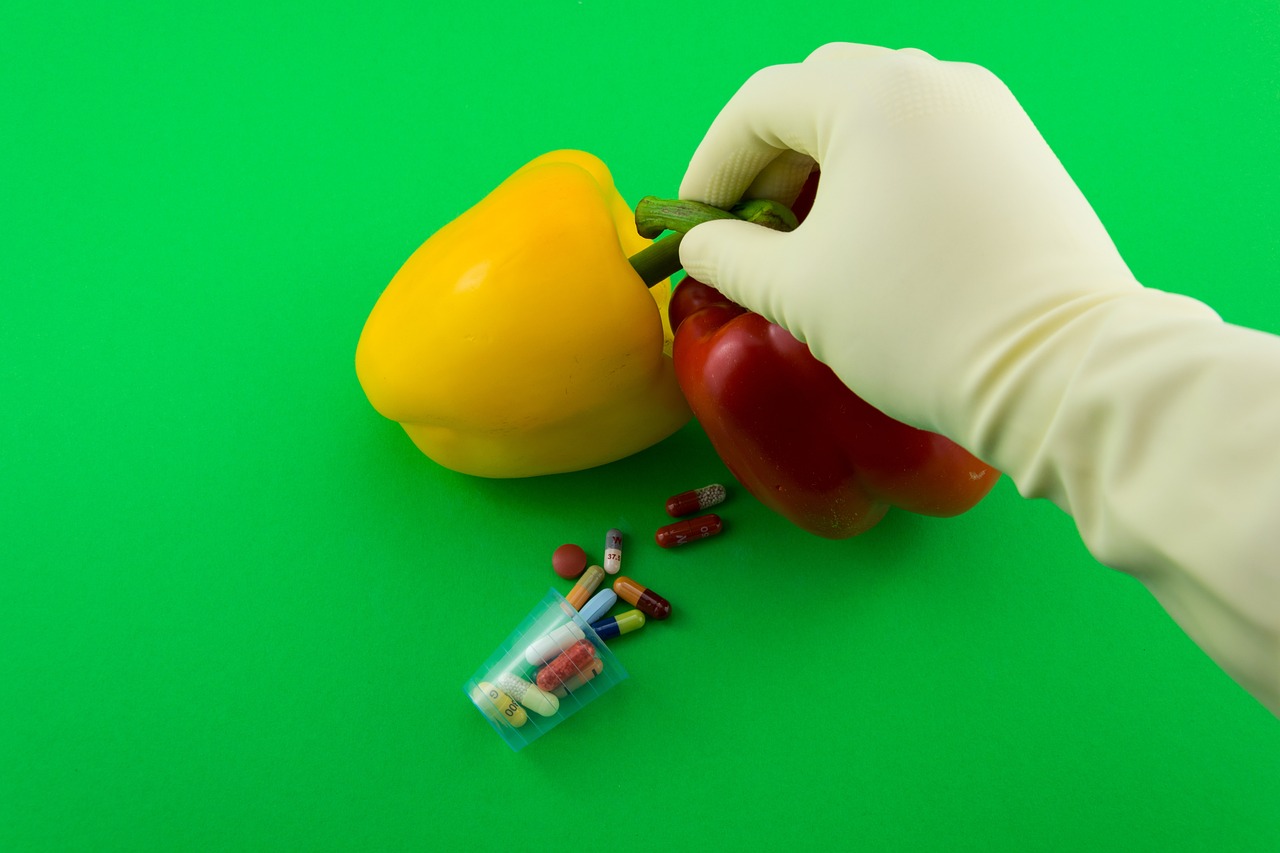
Cellular Agriculture
Cellular agriculture is not just a buzzword; it’s a revolutionary approach to food production that has the potential to change how we think about meat and dairy. Imagine being able to produce meat without raising animals, effectively reducing the environmental impact of traditional livestock farming. This innovative method involves growing animal cells in controlled environments, allowing us to create products like meat and dairy without the need for animal slaughter. It’s like having a mini farm in a lab, where scientists can cultivate the cells that make up our favorite foods.
The benefits of cellular agriculture are immense. For starters, it significantly reduces the carbon footprint associated with traditional farming practices. According to recent studies, cellular agriculture can cut greenhouse gas emissions by up to 90% compared to conventional meat production. Additionally, it requires far less land and water, addressing some of the most pressing challenges of our time, such as climate change and resource scarcity.
One of the most exciting aspects of cellular agriculture is its potential to create sustainable meat alternatives. These alternatives can cater to the growing demand for protein while minimizing the ethical concerns surrounding animal welfare. Imagine enjoying a juicy burger that was grown in a lab—no animals harmed, and no compromise on taste! This technology not only appeals to meat lovers but also to environmentally conscious consumers who want to make a positive impact.
However, like any emerging technology, cellular agriculture comes with its own set of challenges. The production processes must be optimized for scalability and efficiency. As we dive deeper into this field, researchers are exploring various methods to enhance cell growth and differentiation, ensuring that the products are not only safe to eat but also delicious. The journey from lab to table is filled with hurdles, but the potential rewards are too significant to ignore.
As we look to the future, it's crucial to consider the regulatory landscape surrounding cellular agriculture. Policymakers need to establish clear guidelines to ensure that these innovative products are safe for consumers and the environment. Public acceptance will also play a vital role in determining the success of cellular agriculture. Education and transparency about the benefits and processes involved in lab-grown foods will be essential in gaining consumer trust.
In summary, cellular agriculture represents a promising frontier in the quest for sustainable food systems. It offers a glimpse into a future where we can enjoy our favorite foods without the environmental and ethical dilemmas that come with traditional animal farming. As research continues and technology advances, we may soon find ourselves at the forefront of a food revolution that could feed the world while protecting our planet.
- What is cellular agriculture?
Cellular agriculture is the production of animal products from cell cultures instead of traditional livestock farming. - How does cellular agriculture impact the environment?
This method significantly reduces greenhouse gas emissions, land use, and water consumption compared to conventional meat production. - Are lab-grown meats safe to eat?
Yes, lab-grown meats undergo rigorous testing and regulatory approval to ensure safety for consumption. - What are the benefits of cellular agriculture?
Benefits include reduced environmental impact, ethical considerations regarding animal welfare, and the potential for sustainable food production.
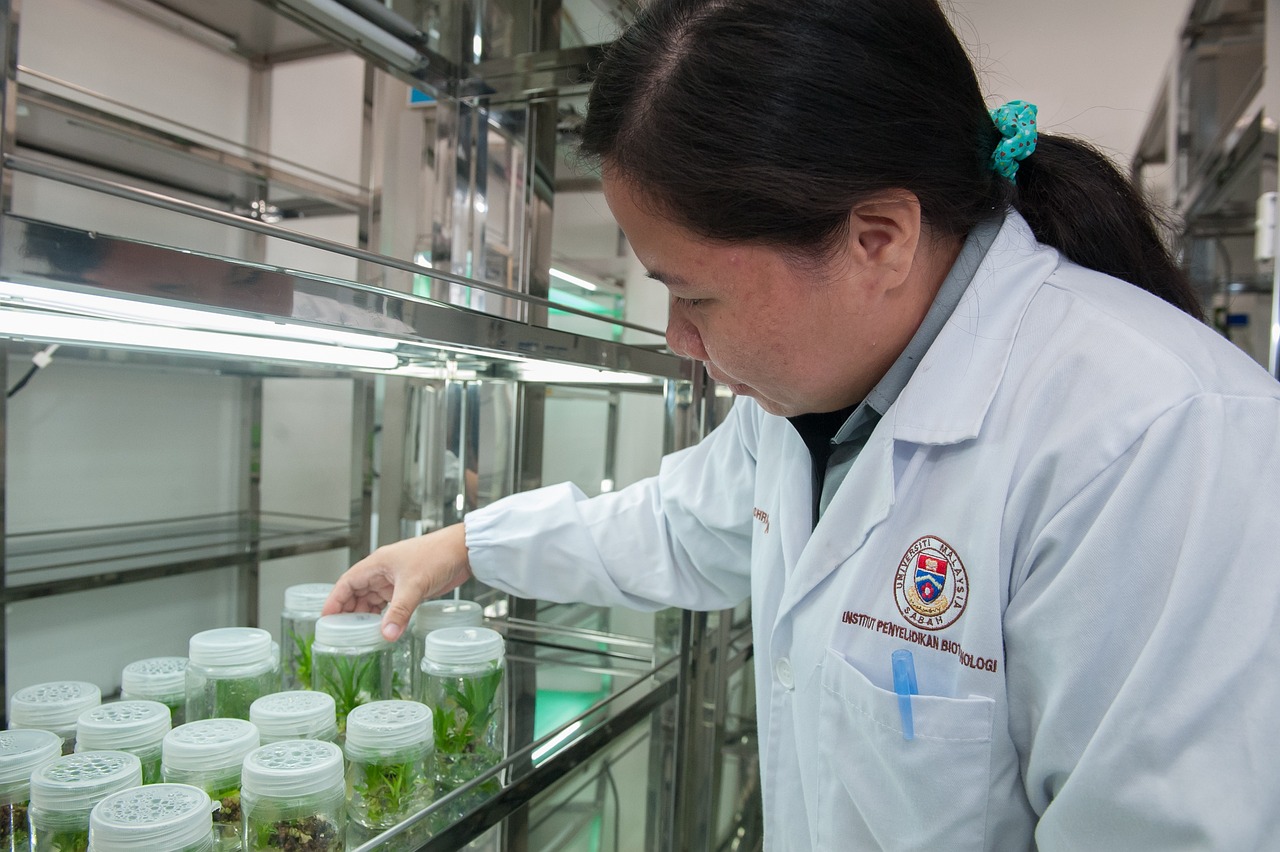
Artificial Intelligence in Biotechnology
Artificial Intelligence (AI) is making waves in the biotechnology sector, changing the way we conduct research and develop new therapies. Imagine having a super-smart assistant that can analyze vast amounts of data in the blink of an eye—this is precisely what AI brings to the table. By integrating machine learning algorithms, scientists can sift through complex datasets, uncovering patterns and insights that would take humans an eternity to find. This transformation not only accelerates drug discovery but also enhances diagnostic tools, making them more accurate and efficient.
One of the most exciting aspects of AI in biotechnology is its ability to perform data analysis and predictive modeling. These advanced techniques allow researchers to identify trends and make informed decisions about experimental designs. Instead of relying solely on traditional methods, scientists can now utilize AI to predict outcomes based on historical data, leading to more reliable and faster results. For example, AI algorithms can analyze genetic data to predict how a patient might respond to a particular treatment, paving the way for more personalized medicine.
Moreover, AI-driven drug discovery is revolutionizing the pharmaceutical industry. The traditional drug development process is often lengthy and costly, but with AI, researchers can expedite the identification of potential drug candidates. By leveraging AI's capabilities, companies can significantly reduce the time and resources needed to bring new therapies to market. This not only benefits pharmaceutical companies but also patients who are eagerly waiting for innovative treatments.
It's essential to recognize that while AI presents incredible opportunities, it also comes with its challenges. The integration of AI into biotechnology must be approached with caution, ensuring that ethical considerations are at the forefront. As we harness the power of AI, we must also address concerns about data privacy, algorithmic bias, and the potential for misuse. Balancing innovation with responsibility is crucial in shaping the future of biotechnology.
In conclusion, the intersection of artificial intelligence and biotechnology is a thrilling frontier. As we continue to explore these advancements, the potential for improved healthcare outcomes, enhanced research capabilities, and innovative solutions to pressing global challenges is immense. The future of biotechnology is not just about biological systems; it’s about how we can leverage technology to create a healthier, more sustainable world.
- What role does AI play in drug discovery?
AI accelerates the drug discovery process by analyzing vast datasets to identify potential drug candidates more quickly and efficiently. - How does AI improve diagnostic tools?
AI enhances diagnostic tools by providing more accurate analyses of patient data, leading to better and faster diagnoses. - Are there ethical concerns with AI in biotechnology?
Yes, there are concerns regarding data privacy, algorithmic bias, and the responsible use of AI technologies in healthcare. - What is predictive modeling in biotechnology?
Predictive modeling uses historical data to forecast outcomes, helping researchers make informed decisions in their experiments.
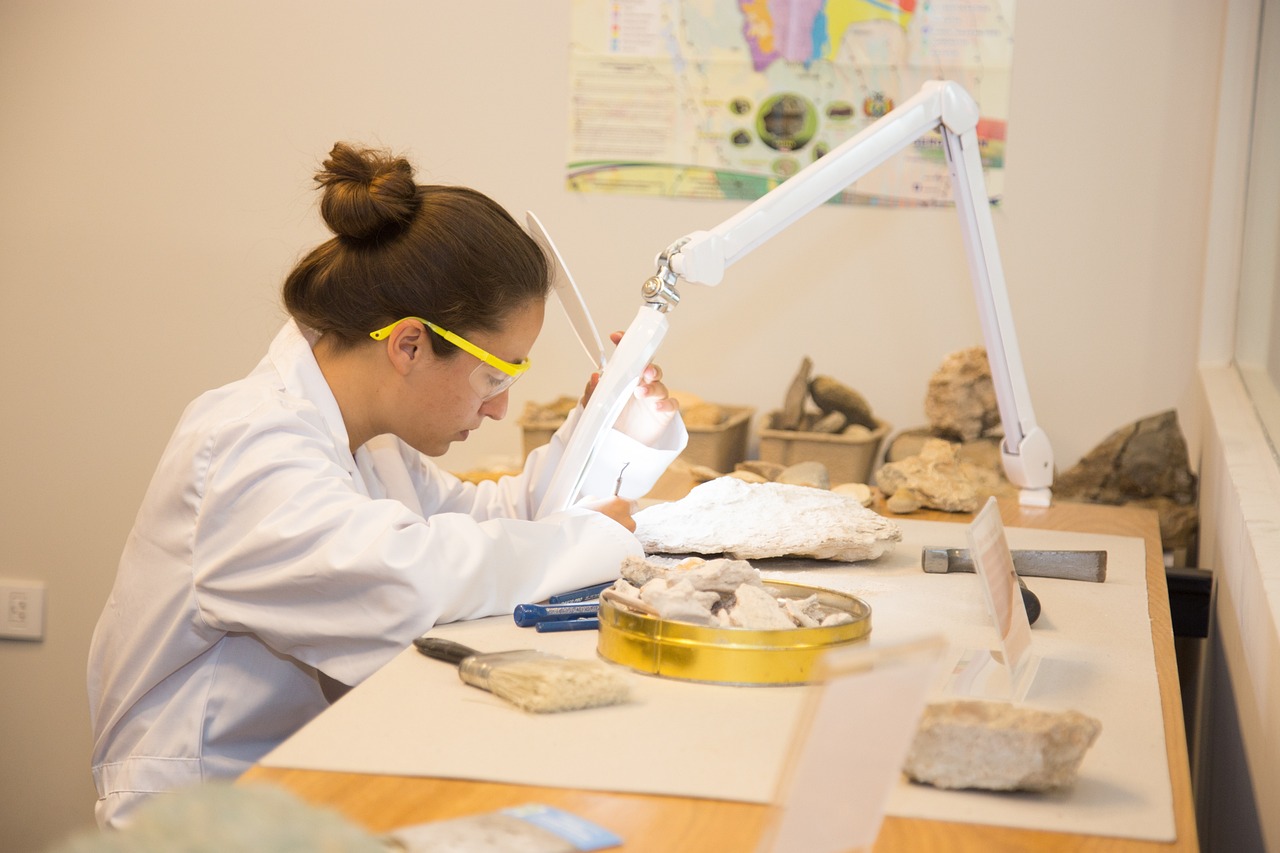
Data Analysis and Predictive Modeling
In the rapidly evolving field of biotechnology, data analysis and predictive modeling have emerged as fundamental components that drive innovation and efficiency. As researchers delve deeper into the complexities of biological systems, they are met with an overwhelming amount of data generated by various experiments and clinical trials. This is where the magic of data analysis comes into play, allowing scientists to sift through the noise and extract meaningful insights.
Imagine trying to find a needle in a haystack; that's what scientists face without robust data analysis techniques. By employing advanced algorithms and statistical tools, researchers can identify patterns and correlations that may not be immediately obvious. These insights not only enhance our understanding of biological processes but also lead to more informed decision-making in experimental design.
Predictive modeling takes this a step further. It allows scientists to create simulations based on existing data to forecast outcomes of future experiments or clinical trials. This capability is akin to having a crystal ball that offers glimpses into potential results, thus saving time and resources. For instance, predictive models can help in determining the efficacy of a new drug before it even enters clinical trials, significantly reducing the risks associated with drug development.
To illustrate the importance of data analysis and predictive modeling in biotechnology, consider the following table that highlights their applications:
| Application | Description | Benefits |
|---|---|---|
| Drug Discovery | Identifying potential drug candidates through data mining | Reduces time and costs associated with R&D |
| Genomic Research | Analyzing genetic sequences to understand diseases | Facilitates personalized medicine approaches |
| Clinical Trials | Predicting patient responses based on historical data | Improves trial design and patient selection |
Moreover, the integration of machine learning into these processes has revolutionized how data is interpreted. Machine learning algorithms can analyze vast datasets much faster than traditional methods, uncovering hidden trends and insights. This not only accelerates the research process but also enhances the accuracy of predictions, making it a game-changer in the field of biotechnology.
In conclusion, the significance of data analysis and predictive modeling in biotechnology cannot be overstated. As we continue to generate more data from various sources, these tools will become increasingly vital in driving forward our understanding and application of biotechnological advancements. With the right data and predictive insights, the future of biotechnology looks not only promising but also profoundly transformative.
- What is data analysis in biotechnology? Data analysis in biotechnology involves the systematic examination of data generated from experiments to extract meaningful insights that can inform research and development.
- How does predictive modeling benefit drug discovery? Predictive modeling helps in forecasting the success of drug candidates, allowing researchers to focus on the most promising options, thereby saving time and resources.
- What role does machine learning play in data analysis? Machine learning enhances data analysis by enabling faster processing and uncovering complex patterns within large datasets, leading to more accurate predictions.
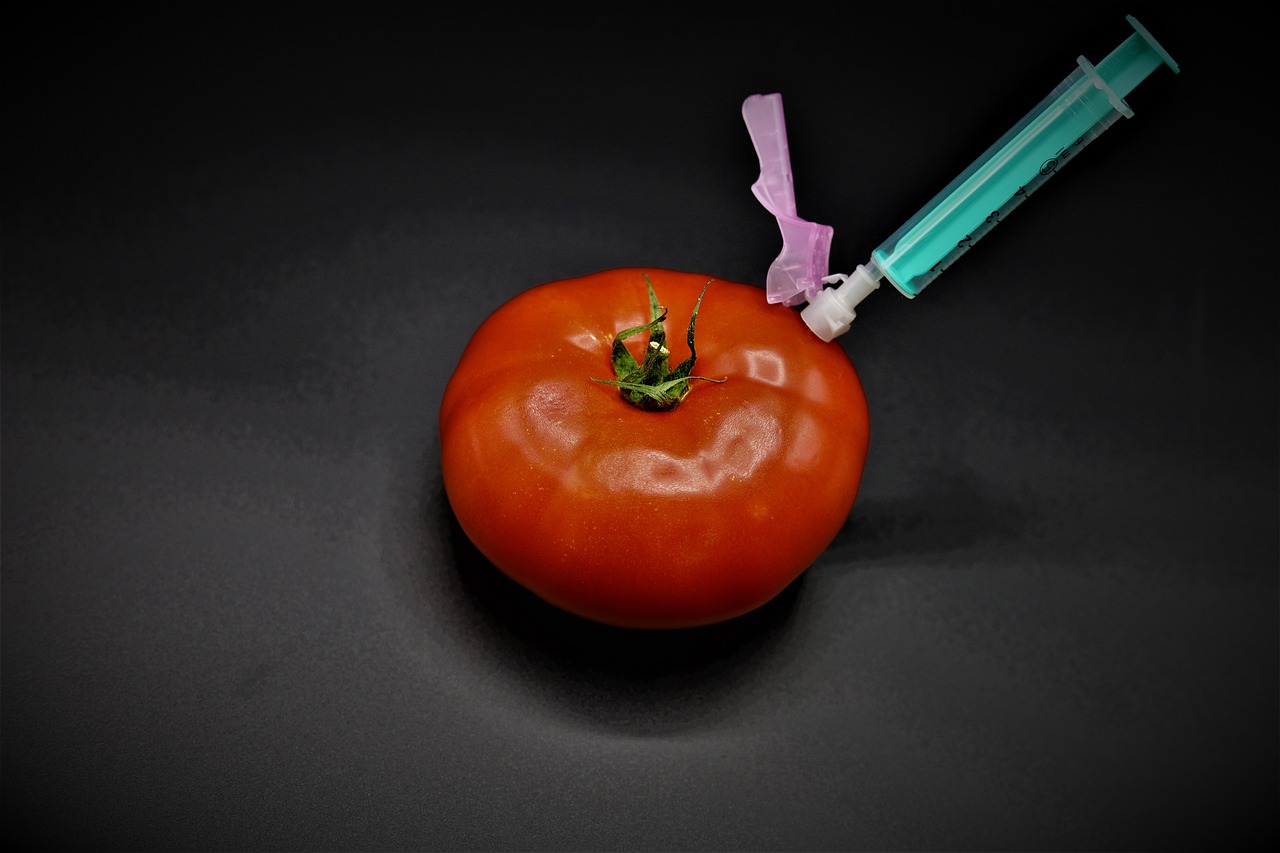
AI-Driven Drug Discovery
In the fast-paced world of biotechnology, is nothing short of a game-changer. Imagine having a powerful assistant that can sift through millions of data points, identifying promising drug candidates faster than a human ever could. That’s exactly what artificial intelligence brings to the table. By utilizing machine learning algorithms, researchers can analyze vast datasets, predict how different compounds will behave, and ultimately streamline the process of drug development.
Traditionally, drug discovery has been a lengthy and costly endeavor, often taking over a decade and billions of dollars to bring a new drug to market. However, with AI, this timeline is shrinking dramatically. For instance, AI can help in:
- Identifying New Targets: AI systems can analyze biological data to reveal previously unknown targets for drug action, opening doors to new treatments.
- Predicting Drug Interactions: By simulating how drugs interact with various biological systems, AI can help avoid potential side effects before clinical trials.
- Optimizing Drug Formulations: AI can assist in designing drug formulations that maximize efficacy while minimizing adverse reactions.
This revolutionary approach not only accelerates the discovery process but also enhances the accuracy of predictions regarding a drug's success. In fact, some studies suggest that AI can reduce the time taken to discover new drugs by up to 50%. This means that patients could receive life-saving medications much sooner than before. With AI, the future of drug discovery looks not only faster but also more precise, leading to tailored treatments that are more effective and have fewer side effects.
Moreover, the integration of AI in drug discovery is not limited to just the initial phases. It extends throughout the entire lifecycle of a drug, from early-stage research to post-market surveillance. For example, AI tools can continuously monitor real-world data, providing insights into how drugs perform in diverse populations and identifying any long-term effects that may not have been evident during clinical trials.
As we look ahead, it’s clear that AI-driven drug discovery is set to revolutionize the pharmaceutical landscape. The potential for faster development times, reduced costs, and improved patient outcomes makes it an exciting area of research. However, this innovation also comes with challenges, including the need for robust data privacy measures and ethical considerations in AI deployment. Balancing these factors will be crucial as we embrace the future of drug discovery.
- What is AI-driven drug discovery? AI-driven drug discovery refers to the use of artificial intelligence and machine learning algorithms to identify and develop new pharmaceutical compounds more efficiently than traditional methods.
- How does AI improve the drug discovery process? AI improves the drug discovery process by analyzing large datasets to identify potential drug candidates, predict drug interactions, and optimize formulations, significantly reducing time and costs.
- What are the challenges associated with AI in drug discovery? Challenges include ensuring data privacy, maintaining ethical standards, and integrating AI tools into existing research workflows.

Sustainable Practices in Biotechnology
Sustainability is not just a buzzword; it's a driving force behind the latest innovations in biotechnology. As we face pressing environmental challenges, the biotechnology sector is stepping up to the plate, offering solutions that not only enhance productivity but also prioritize the health of our planet. One of the most exciting aspects of this movement is the development of sustainable practices that aim to minimize waste, conserve resources, and reduce the carbon footprint across various industries.
At the heart of these sustainable practices are technologies that promote a circular economy. This approach emphasizes recycling and reusing materials, ensuring that waste is minimized at every step of production. For instance, biotechnology is leading the charge in creating processes that convert waste into valuable products, effectively turning potential environmental liabilities into assets. Imagine a world where agricultural waste is not discarded but transformed into biofuels or biodegradable plastics!
Another significant area of focus is the development of biodegradable materials. Traditional plastics have wreaked havoc on our ecosystems, contributing to pollution and harming wildlife. In response, biotechnologists are innovating new materials derived from natural sources that break down more easily and do not leave a lasting negative impact on the environment. These materials are not only better for the planet but also offer similar functionalities to conventional plastics, making them a viable alternative in various applications.
To illustrate the impact of these sustainable practices, consider the following table that highlights key innovations in biotechnology aimed at sustainability:
| Innovation | Description | Environmental Benefit |
|---|---|---|
| Biodegradable Plastics | Plastics made from renewable resources that decompose naturally. | Reduces landfill waste and pollution. |
| Waste-to-Energy Technologies | Processes that convert waste materials into energy. | Minimizes waste and generates renewable energy. |
| Biofuels | Fuels produced from organic materials. | Reduces reliance on fossil fuels and lowers greenhouse gas emissions. |
Moreover, the biotechnology sector is also focusing on agricultural sustainability. By employing biotechnological advancements, farmers can enhance crop resilience against pests and diseases, reducing the need for chemical pesticides. This not only leads to healthier crops but also protects biodiversity and promotes soil health. Imagine a farm where crops thrive without the heavy use of harmful chemicals!
In conclusion, the push for sustainable practices in biotechnology is more than just a trend; it's a necessary evolution in how we approach production and consumption. By embracing innovations that prioritize the environment, we can pave the way for a greener future that benefits both our planet and future generations. The question now is: are we ready to support and implement these changes?
- What are sustainable practices in biotechnology? Sustainable practices in biotechnology involve methods and innovations that minimize waste, conserve resources, and reduce environmental impact.
- How do biodegradable materials benefit the environment? Biodegradable materials break down naturally, reducing pollution and waste in landfills, unlike traditional plastics that can take hundreds of years to decompose.
- Can biotechnology help in agriculture? Yes, biotechnology enhances agricultural practices by developing crops that are more resilient to diseases and pests, which decreases the need for chemical treatments.
- What is a circular economy? A circular economy is an economic system aimed at eliminating waste and the continual use of resources, promoting sustainability through recycling and reusing materials.
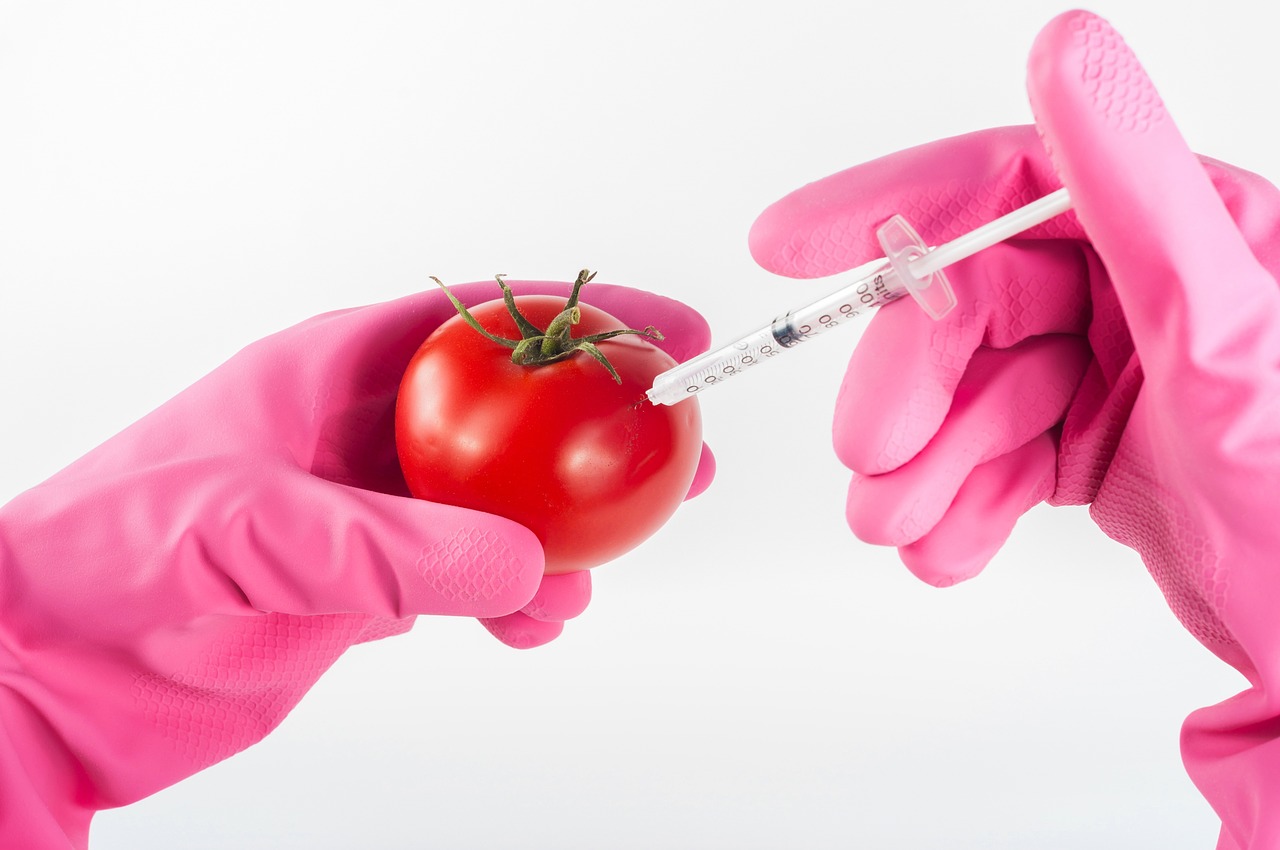
Waste Reduction Technologies
In today's world, where environmental concerns are becoming increasingly urgent, are stepping into the spotlight as a beacon of hope. These technologies not only aim to minimize waste generation but also promote the efficient use of resources, thereby supporting a more sustainable future. Imagine a world where waste is not merely discarded but transformed into valuable products—this is the promise of innovative waste reduction technologies.
At the heart of these advancements is the concept of the circular economy, which seeks to redefine traditional manufacturing and consumption patterns. Instead of the linear model where products are made, used, and thrown away, the circular economy emphasizes reusing, repairing, and recycling. For instance, technologies that convert organic waste into biogas or compost not only reduce landfill contributions but also provide renewable energy sources and nutrient-rich fertilizers.
Moreover, industries are increasingly adopting waste-to-energy technologies that convert waste materials into usable energy. This process not only diverts waste from landfills but also generates electricity, contributing to energy security. By harnessing waste as a resource, businesses can significantly reduce their environmental footprint while simultaneously generating economic value.
To illustrate the impact of waste reduction technologies, consider the following table that outlines various technologies and their benefits:
| Technology | Description | Benefits |
|---|---|---|
| Waste-to-Energy | Converts waste materials into energy through combustion or anaerobic digestion. | Reduces landfill use, generates renewable energy. |
| Composting | Transforms organic waste into nutrient-rich compost through natural decomposition. | Enhances soil health, reduces methane emissions from landfills. |
| Recycling Technologies | Processes materials to create new products, minimizing the need for raw materials. | Conserves resources, reduces pollution, saves energy. |
Furthermore, companies are embracing advanced manufacturing techniques such as 3D printing, which allows for precise material use and significantly reduces waste during production. This technology not only cuts down on excess materials but also enables the creation of complex designs that were previously impossible, showcasing how innovation can lead to sustainability.
As we navigate this transformative era, it is crucial for businesses, policymakers, and consumers alike to champion waste reduction technologies. By fostering a culture of sustainability and encouraging the adoption of these innovative solutions, we can pave the way for a greener planet. After all, the future of our environment depends on the choices we make today.
- What are waste reduction technologies?
These are innovative methods and processes designed to minimize waste generation and promote the efficient use of resources. - How do waste-to-energy technologies work?
They convert waste materials into energy, either through combustion or anaerobic digestion, thereby reducing landfill contributions. - What is the circular economy?
It is an economic model that emphasizes reusing, repairing, and recycling products to create a closed-loop system, minimizing waste. - Why is composting important?
Composting transforms organic waste into nutrient-rich soil amendments, reducing methane emissions and improving soil health.

Biodegradable Materials
In our quest for a sustainable future, have emerged as a beacon of hope, offering innovative solutions to combat the pervasive issue of plastic pollution. Unlike traditional plastics, which can take hundreds of years to decompose, biodegradable materials are designed to break down more quickly and efficiently, minimizing their impact on the environment. These materials are derived from renewable sources, such as plants, and can be engineered to decompose through natural processes, making them a vital component in the fight against waste.
One of the most exciting aspects of biodegradable materials is their versatility. They can be used in a wide range of applications, from packaging and disposable utensils to agricultural films and even in construction. For instance, companies are now creating biodegradable plastics that can replace conventional plastic bags, providing the same functionality without the long-lasting environmental consequences. This shift not only helps reduce waste but also encourages a circular economy where materials are reused and recycled.
However, it's essential to understand that not all biodegradable materials are created equal. The decomposition process can vary significantly depending on the material's composition and the environmental conditions in which it is disposed of. For example, some biodegradable plastics require specific industrial composting facilities to break down, while others can decompose in home composting systems. This variability highlights the need for consumer education and awareness regarding proper disposal methods.
To illustrate the differences between various biodegradable materials, consider the following table:
| Material Type | Source | Decomposition Time | Disposal Method |
|---|---|---|---|
| PLA (Polylactic Acid) | Corn starch | 3-6 months (in industrial composting) | Industrial composting |
| PHA (Polyhydroxyalkanoates) | Bacteria | 3-6 months (in various environments) | Home composting or landfill |
| Starch-based plastics | Starch | 1-3 months (in industrial composting) | Industrial composting |
As we continue to innovate and refine biodegradable materials, it is crucial to consider their life cycle and overall environmental impact. While they offer a promising alternative to traditional plastics, we must also address the agricultural practices used to produce these materials. This includes ensuring that the cultivation of crops for biodegradable products does not lead to deforestation or other ecological harm.
In conclusion, biodegradable materials represent a significant step towards reducing our reliance on conventional plastics and mitigating their environmental footprint. By embracing these innovative solutions, we can pave the way for a cleaner, greener future. The challenge lies not only in developing these materials but also in educating consumers and industries about their proper use and disposal. Together, we can make a meaningful impact in the fight against plastic pollution.
- What are biodegradable materials? Biodegradable materials are substances that can break down naturally in the environment, reducing waste and pollution.
- How long do biodegradable materials take to decompose? Decomposition time varies by material and environmental conditions, ranging from a few months to several years.
- Can biodegradable materials be composted at home? Some biodegradable materials can be composted at home, while others require industrial composting facilities.
- Are biodegradable materials better for the environment than traditional plastics? Yes, biodegradable materials generally have a lower environmental impact as they break down more quickly and are often made from renewable resources.
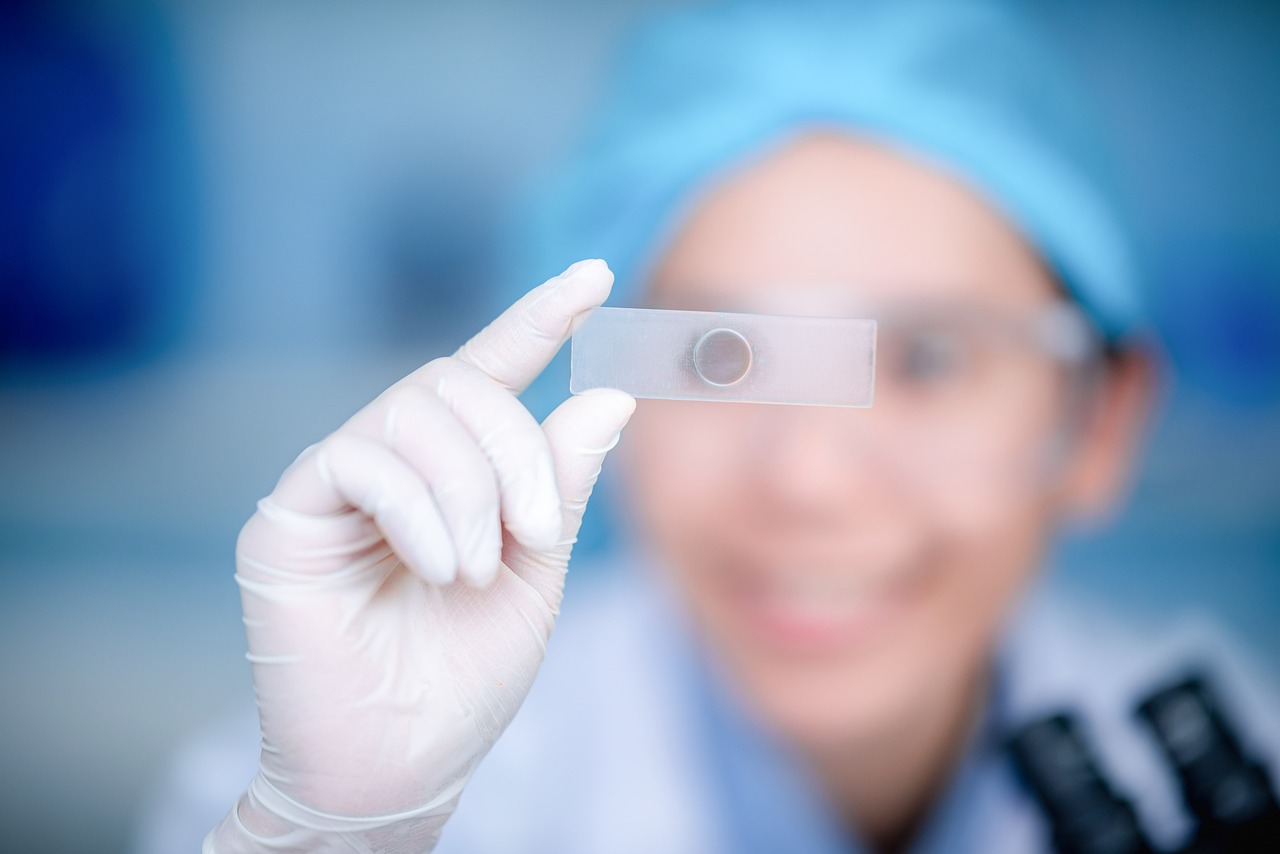
Future Workforce and Education
The biotechnology sector is evolving at a breakneck speed, and with this rapid change comes a pressing need for a skilled workforce equipped to tackle the challenges of tomorrow. As new technologies and methodologies emerge, the educational landscape must also adapt to prepare future professionals for an industry that is not only innovative but also deeply intertwined with various scientific disciplines. This means that educational programs must evolve to incorporate a blend of biological sciences, engineering, and data analysis, creating a well-rounded curriculum that addresses the multifaceted nature of biotechnology.
One of the most effective ways to prepare students for this dynamic field is through interdisciplinary approaches in education. By fostering collaboration among various fields such as biology, chemistry, computer science, and environmental science, educational institutions can enhance students' problem-solving skills and prepare them for complex real-world issues. For instance, a student who understands both biotechnology and data science is much better equipped to innovate in areas like AI-driven drug discovery or genetic engineering.
Moreover, continuous learning and adaptation are essential in the rapidly evolving biotechnology landscape. The pace of innovation means that professionals must stay updated on advancements to remain competitive and effective in their roles. This can be achieved through various means, such as:
- Participating in workshops and seminars
- Engaging in online courses and certifications
- Joining professional organizations and networks
These avenues not only provide valuable knowledge but also foster connections within the industry, which can be instrumental for career growth. As biotechnology continues to intersect with fields like artificial intelligence and sustainability, the workforce must be agile and ready to embrace new concepts and tools that emerge.
Furthermore, educational institutions should consider integrating hands-on experiences into their curricula. Internships, lab work, and industry partnerships can provide students with practical skills and insights that are crucial for their future careers. By bridging the gap between theoretical knowledge and real-world application, students will be better prepared to enter the workforce and contribute meaningfully to the field of biotechnology.
In conclusion, the future of the biotechnology workforce hinges on a robust educational framework that emphasizes interdisciplinary learning, continuous adaptation, and practical experience. As we look ahead, it is clear that investing in education is not just beneficial; it is essential for fostering the next generation of innovators who will drive the biotechnology industry forward.
Q1: What skills are essential for a career in biotechnology?
A1: Key skills include a strong foundation in biological sciences, data analysis, critical thinking, and collaboration. Familiarity with laboratory techniques and software tools is also beneficial.
Q2: How can I stay updated on biotechnology advancements?
A2: You can stay informed by reading scientific journals, attending conferences, participating in online courses, and joining professional organizations related to biotechnology.
Q3: Are there specific degrees that are preferred in the biotechnology field?
A3: Degrees in biology, biochemistry, biomedical engineering, and bioinformatics are commonly pursued. However, interdisciplinary backgrounds that combine these fields with technology or data science are increasingly valued.
Q4: What role does continuous learning play in biotechnology?
A4: Continuous learning is crucial due to the rapid advancements in the field. Professionals need to update their skills and knowledge regularly to remain competitive and effective in their roles.

Interdisciplinary Approaches
In the dynamic world of biotechnology, have emerged as a cornerstone for innovation and problem-solving. The complexity of modern challenges demands that we break down the silos of traditional disciplines. Imagine a team where biologists, chemists, data scientists, and ethicists come together, each bringing their unique perspectives and expertise to the table. This collaboration not only fosters creativity but also leads to more comprehensive solutions that address multifaceted issues.
For instance, when developing a new biopharmaceutical, it’s not just the biologists who are at work. Chemists analyze the molecular structures, while data scientists use machine learning algorithms to predict the efficacy of potential compounds. Meanwhile, ethicists ensure that the research adheres to moral guidelines, considering the societal implications of new treatments. This collaborative synergy is akin to a well-orchestrated symphony, where each instrument plays a vital role in creating a harmonious outcome.
Moreover, educational institutions are beginning to recognize the importance of this interdisciplinary approach. They are designing programs that integrate various fields, allowing students to gain a broader perspective. This educational shift is essential because the next generation of biotechnologists will need to navigate the complexities of global health, environmental sustainability, and technological advancements. By equipping students with a diverse skill set, we prepare them to tackle real-world problems more effectively.
To illustrate the impact of interdisciplinary approaches, consider the following benefits:
- Enhanced Problem Solving: Diverse teams can brainstorm and analyze problems from multiple angles, leading to innovative solutions.
- Increased Efficiency: Collaboration can streamline processes, reducing the time and resources needed to bring products to market.
- Broader Perspectives: Exposure to different disciplines fosters a culture of inclusivity and creativity, encouraging out-of-the-box thinking.
As biotechnology continues to evolve, the need for interdisciplinary collaboration will only grow. Organizations that embrace this approach will likely lead the charge in innovation, setting new standards for the industry. In essence, the future of biotechnology hinges on our ability to work together across disciplines, uniting our strengths to create solutions that benefit society as a whole.
- What is interdisciplinary approach in biotechnology?
It refers to the collaboration of professionals from different fields such as biology, chemistry, data science, and ethics to address complex challenges in biotechnology. - Why is collaboration important in biotechnology?
Collaboration fosters creativity, enhances problem-solving, and leads to more comprehensive solutions that address multifaceted issues effectively. - How can educational institutions support interdisciplinary approaches?
By designing programs that integrate various fields and encourage collaboration among students, educational institutions can prepare future professionals for the challenges of biotechnology.

Continuous Learning and Adaptation
In the fast-paced world of biotechnology, the importance of continuous learning and adaptation cannot be overstated. As new technologies emerge and scientific discoveries unfold, professionals in this field must remain agile, constantly updating their knowledge and skills to keep pace with the changes. Imagine trying to navigate a river that’s constantly shifting its course; that’s what working in biotechnology feels like. If you’re not prepared to adapt, you might just find yourself swept away by the current of innovation.
To thrive in this dynamic environment, individuals must embrace a mindset of lifelong learning. This doesn’t just mean attending workshops or completing online courses; it involves actively seeking out new information and experiences. For example, professionals can:
- Participate in industry conferences and seminars to gain insights into the latest trends.
- Engage in collaborative projects that encourage knowledge sharing and skill development.
- Utilize online platforms and resources for self-directed learning, such as webinars and MOOCs (Massive Open Online Courses).
Moreover, organizations play a crucial role in fostering a culture of continuous learning. By providing employees with access to training programs and encouraging them to pursue further education, companies not only enhance their workforce’s capabilities but also boost employee morale and retention. It’s a win-win situation! After all, when employees feel valued and empowered to grow, they are more likely to contribute positively to the organization’s success.
In addition to formal education, professionals should also focus on developing soft skills that are essential in the biotechnology landscape. Skills such as critical thinking, problem-solving, and effective communication can significantly enhance one’s ability to adapt to new challenges. The ability to analyze complex data, communicate findings clearly, and collaborate with interdisciplinary teams is invaluable in driving innovation forward.
As we look to the future, it’s clear that biotechnology will continue to evolve at a rapid pace. The advent of technologies like artificial intelligence and machine learning will further accelerate this change, making it imperative for professionals to stay informed and adaptable. In this context, the concept of adaptive expertise becomes increasingly relevant. This approach emphasizes not just the accumulation of knowledge, but the ability to apply that knowledge effectively in varying circumstances.
In conclusion, continuous learning and adaptation are not just buzzwords in the biotechnology sector; they are essential strategies for success. By embracing these principles, professionals can navigate the ever-changing landscape of biotechnology, ensuring they remain relevant and impactful in their roles. So, as you embark on your journey in this exciting field, remember to keep your mind open and your skills sharp. The future is bright for those who are ready to learn and adapt!
Q1: Why is continuous learning important in biotechnology?
A1: Continuous learning is crucial in biotechnology due to the rapid advancements in technology and research. Staying updated allows professionals to remain relevant and effectively contribute to innovation.
Q2: How can professionals engage in continuous learning?
A2: Professionals can engage in continuous learning by attending industry conferences, participating in workshops, enrolling in online courses, and collaborating on projects that promote knowledge sharing.
Q3: What soft skills are important for biotechnology professionals?
A3: Important soft skills include critical thinking, problem-solving, and effective communication, which help professionals navigate challenges and collaborate with diverse teams.
Q4: What is adaptive expertise?
A4: Adaptive expertise refers to the ability to apply knowledge effectively in various contexts, emphasizing not just learning information but also adapting it to meet new challenges.
Frequently Asked Questions
- What is precision medicine?
Precision medicine is a revolutionary approach to healthcare that tailors treatments based on individual genetic profiles. This means that therapies can be customized to enhance effectiveness and minimize side effects, leading to better patient outcomes.
- How does CRISPR technology work?
CRISPR technology allows scientists to make precise edits to DNA. By targeting specific genes, it can potentially treat genetic disorders and improve agricultural practices, making crops more resilient to challenges like climate change.
- What are the ethical concerns surrounding gene editing?
The rise of gene editing technologies brings forth significant ethical questions. It's crucial to balance innovation with moral implications to ensure that biotechnology is used responsibly in society.
- What challenges does biotechnology face in regulatory frameworks?
Biotechnology must navigate complex regulatory landscapes that can hinder innovation. Policymakers are tasked with creating guidelines that promote safety and ethical considerations while still encouraging scientific advancements.
- How can biotechnology improve agricultural practices?
Biotechnology enhances agriculture through the development of genetically modified organisms (GMOs) that can withstand pests and climate conditions. This leads to increased crop yields and sustainability in farming practices.
- What is biomanufacturing?
Biomanufacturing uses biological systems, like microorganisms, to produce materials and chemicals. This method reduces reliance on fossil fuels and promotes sustainability, making it a vital trend in modern manufacturing.
- How is artificial intelligence used in biotechnology?
AI enhances biotechnology by streamlining research and development processes. Machine learning algorithms analyze vast amounts of data, which accelerates drug discovery and improves diagnostic tools.
- What are waste reduction technologies in biotechnology?
Waste reduction technologies focus on minimizing environmental impact through efficient resource use. These innovations support circular economy principles, helping businesses operate sustainably and protecting ecosystems.
- Why is education important for the future workforce in biotechnology?
As biotechnology evolves rapidly, a skilled workforce is essential. Educational programs must adapt to prepare students for emerging challenges, emphasizing interdisciplinary approaches and continuous learning.

